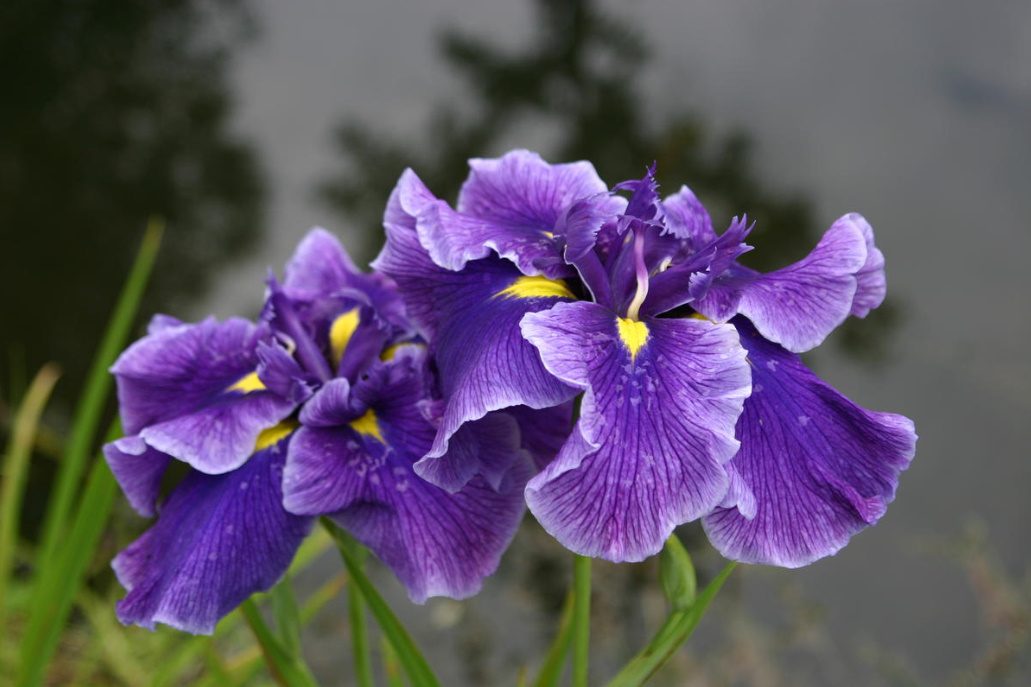
Every year at the end of June, my heart starts beating faster, and when I go out into the garden, I hurry to the pond to see how the Japanese iris flowers hover over the water like butterflies and are reflected in its surface. They are serenely beautiful and exquisitely refined. Looking at them, you understand why the inhabitants of the Land of the Rising Sun, annually performing contemplation, admire them in the same way as the spring cherry blossoms.
These amazing plants originate from Iris ensata Thund., which is otherwise called Iris kaempferi.
Iris ensata settles in marshy meadows. Even the specific forms of the plant are extremely decorative: peduncles about 80 cm high bear large flowers of dark purple color with a yellow eye (“signal”) in the center of the lower petals. Plants with white and even pink flowers are occasionally found among wild plants, and such color mutations are stable and persist when the conditions in which the iris grows change. In specific plants, the flowers are single with three “petals” lowered down-the lobes of the perianth. This form of flower is otherwise called “weeping”.
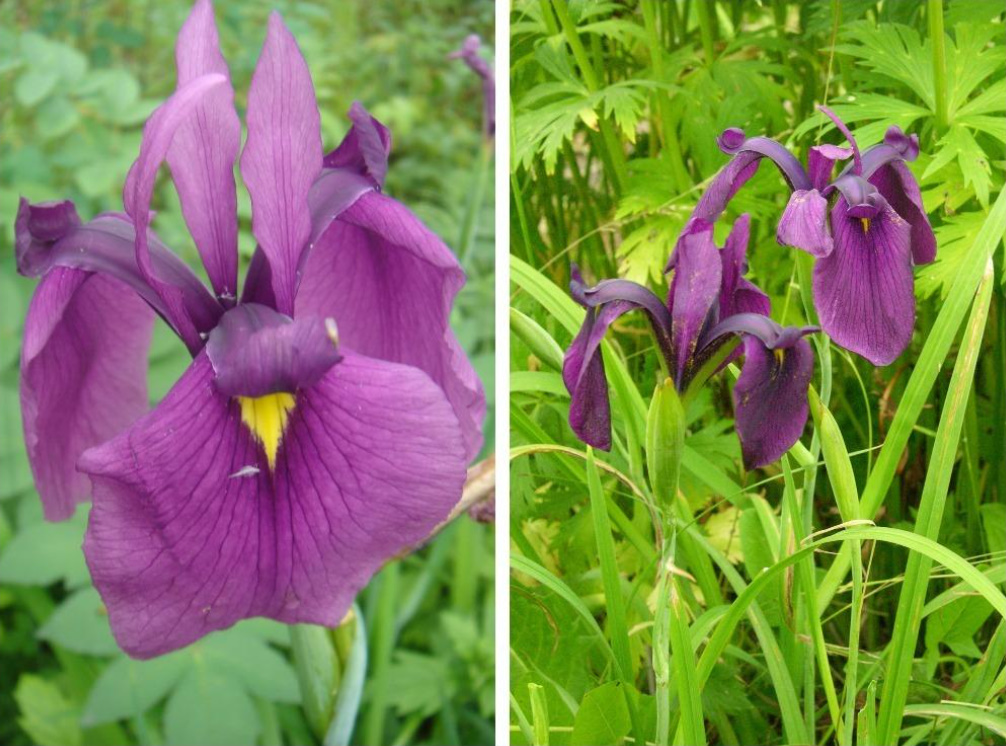
In Japan, where numerous varieties of Iris ensata are called “hana-shobu”, these plants have been cultivated for several centuries. Mentions of them appeared in the XV century, and by 1755 there were already more than one hundred varieties. In the cultural tradition of Japan, these irises, because of their narrow xiphoid leaves, are the embodiment of masculinity and a symbol of boys.
As for Europe, for the first time hana-shobu appeared at a flower-growing exhibition in Belgium in 1857. However, they have gained particular popularity not on the European continent, but in America. Outside of the Japanese Islands, it is the United States that holds the palm in creating new varieties of Japanese iris.
Classification of Japanese irises
There are extremely many varieties of hana-shobu. In order not to drown in this ocean, a special classification was created for them. Plants are divided depending on the height, size of the flower and, most importantly, its shape. There are three main types of hana-shobu. They were formed in Japan and have local names associated with cities or provinces where breeding work was carried out in the XIX century.
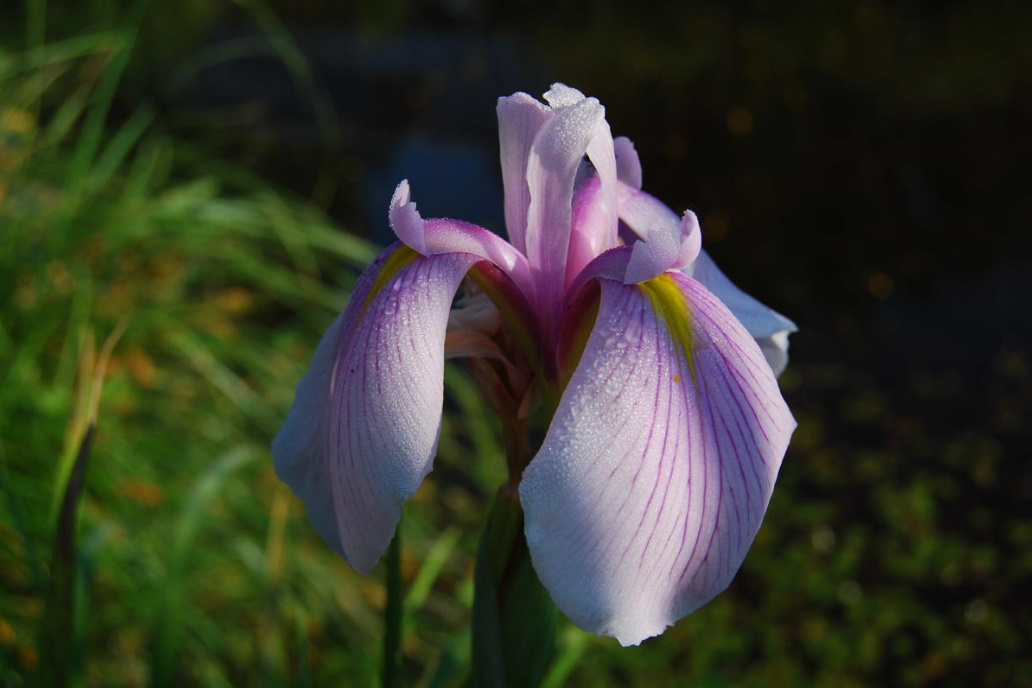
The Ise type is very similar to the species form. Irises of this group have single flowers with three lobes of the perianth lowered down, and the peduncles do not exceed the leaves in height. It is this type of hana-shobu that is considered canonical in his homeland. The famous breeder Shuichi Hirao in his book about Japanese irises writes that the varieties of this group have “the grace of a young woman of noble origin.”
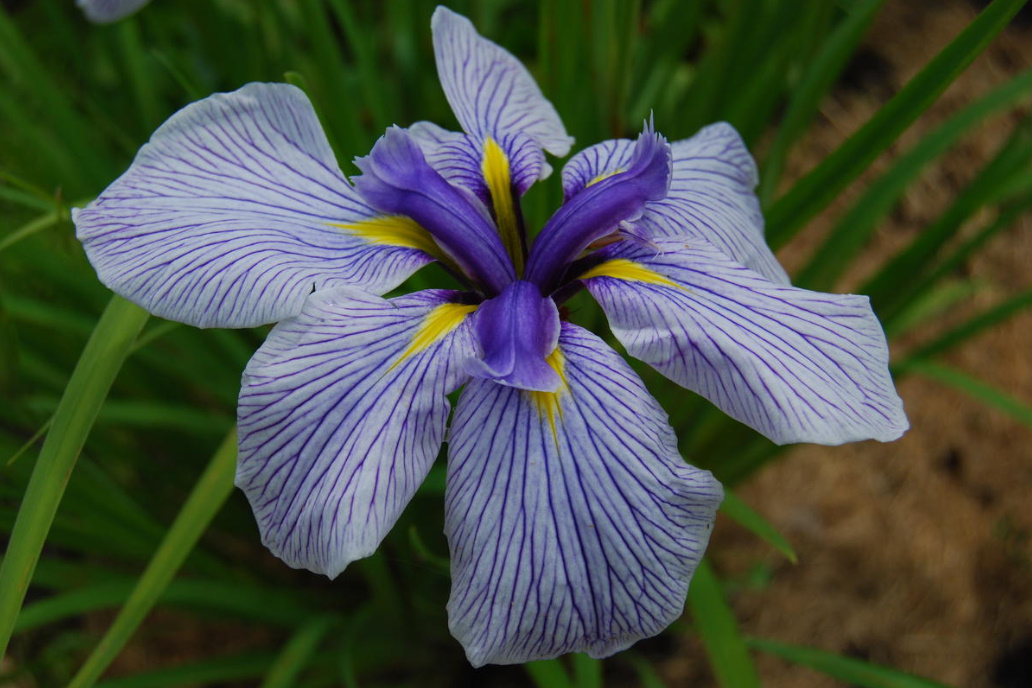
The Edo type combines varieties of irises with single or double flowers having six “petals”. The perianth lobes of Edo-type varieties are often corrugated. They are located almost in a horizontal plane or slightly droop. The flower stalks of the hana-shobu of this type exceed the leaves. The elegant appearance of Edo irises, according to Shuichi Hirao, recalls the culture of merchants that dominated Tokyo for a long time.

And finally, Higo is a type of iris with a high peduncle and huge flowers having from 9 to 12 perianth lobes. Such flowers are called multipetal. The lower “petals” — fouls — are slightly stacked on top of each other, and in the center there are supralateral ridges and additional upper “petals” (petaloids), shortened and often having an unusual shape. Higo irises, in the words of Shuichi Hirao, are full of “the solemn dignity inherent in the feudal lords of ancient Japan.”
Due to their splendor, Edo and Higo type hana-shobu are popular in the USA and Europe, unlike Japan, where preference is traditionally given to the Ise type.

Japanese irises differ from each other in terms of flowering time. In a simplified version, early (E), medium (M) and late (L) varieties are distinguished. However, it must be remembered that the specific flowering dates of each variety are indicated taking into account the climatic conditions of the area where this plant is cultivated. Nevertheless, the criterion itself is extremely important, since late blooming varieties are not always suitable for our climate.
The color scheme of Japanese irises is very rich. There are numerous shades of purple, the innocence of white, the luxury of purple, iridescences of blue and flashes of pink. The colors are intertwined with each other in exquisite combinations, and the drawings on the “petals” seem to be a masterpiece of Japanese calligraphy.
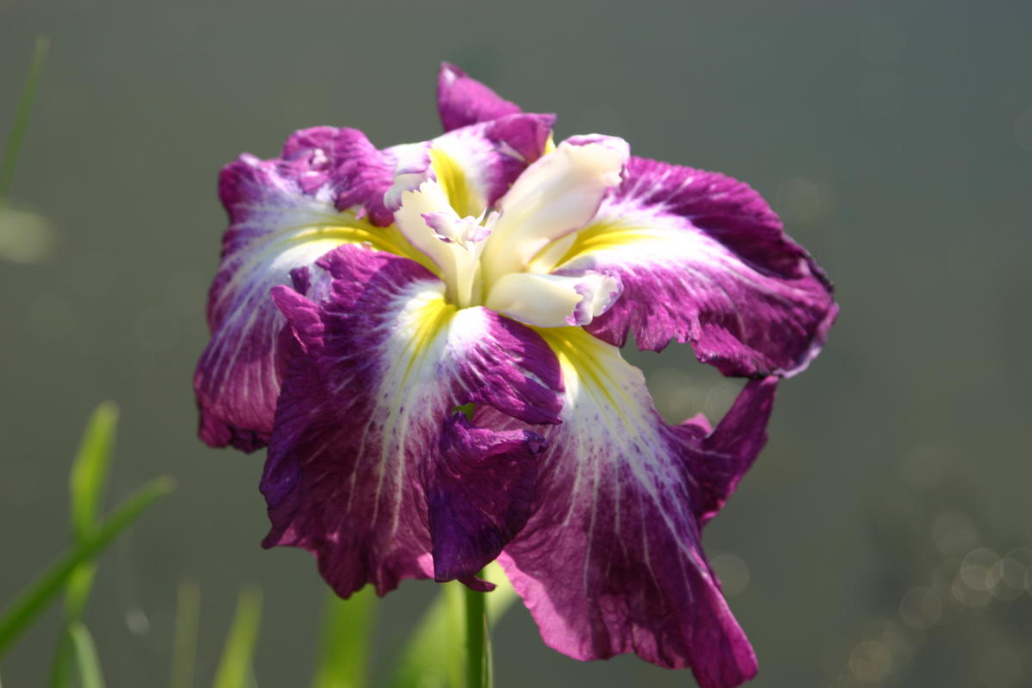
Flowers of some varieties of hana-shobu, unlike bearded irises, can live up to 5 days. Their only drawback can be considered the absence of smell.

Agrotechnics of Japanese irises
Three factors have the greatest influence on the development of Japanese irises: soil acidity, heat and moisture. First of all, you need to remember that they are calceophobes, that is, they do not tolerate lime at all. They require acidic, and preferably slightly acidic soil, but an excess of peat in the substrate is extremely undesirable. Light loams with the addition of sand will be optimal.
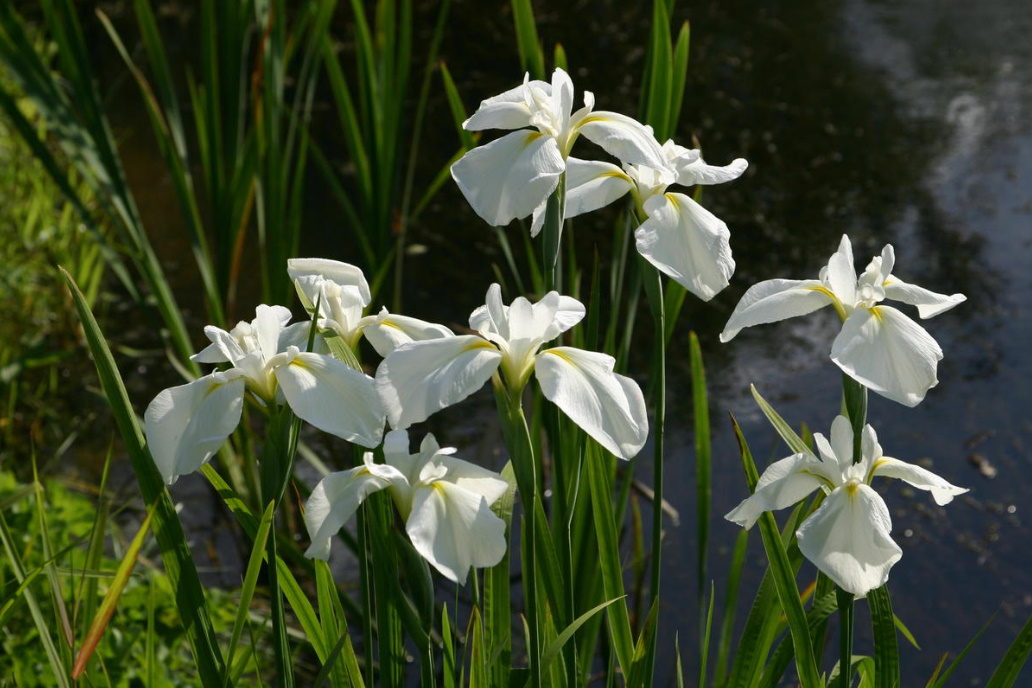
Hana-shobu — plants for a warm sunny place. Their planting in partial shade is associated with the risk of not waiting for flowering, since its timing in this case may significantly shift. In the north, they do not always have enough annual sum of positive temperatures, therefore, the more heat the plants receive during the season, the higher the probability that they will delight with flowers.

The need of hana-shobu for moisture is very high, but they should never be planted in shallow water, like Iris pseudacorus. Planting should be carried out in such a way that moisture accumulates in this place, especially during the flowering period. In the homeland of the hana-shobu planting at this time, they even pour water.

The well-known Lithuanian iris grower E. Kondratas proposes a project of a whole hydraulic system for supplying plants with moisture. But it is much easier to use other recommendations, for example, to plant irises in lowered areas or to build raised sides around the perimeter of the planting that will retain water. And, of course, often and generously watered.
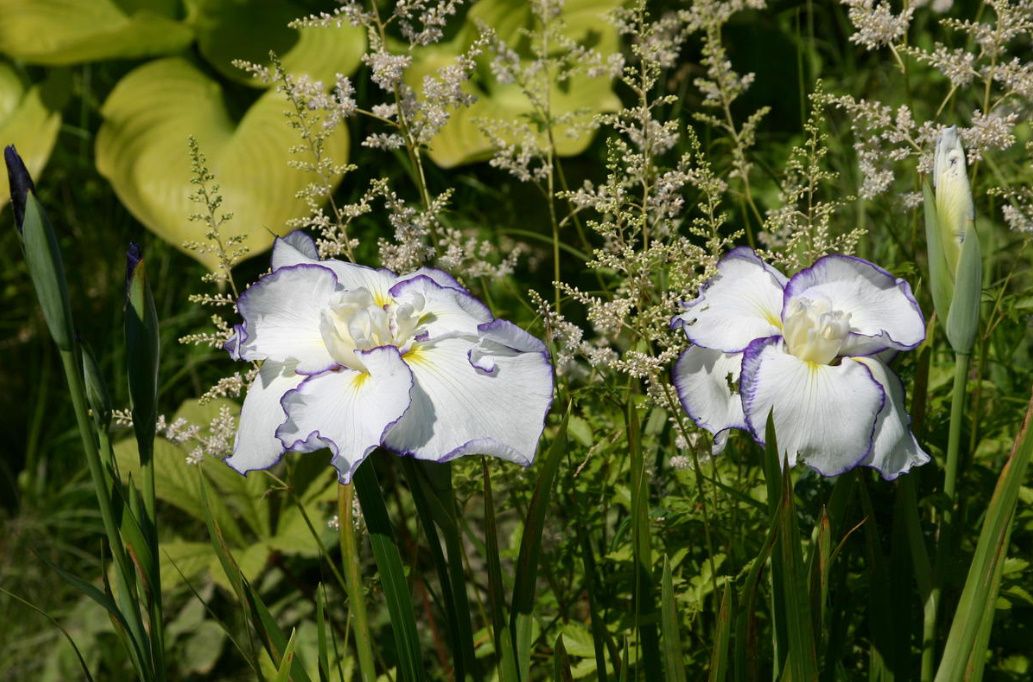
You can plant hana-shobu in spring and early autumn, but you can transplant and divide it only at the end of summer or in the first half of September, when the plants have already faded. Otherwise, they simply will not have time to “settle in” in a new place before the onset of cold weather. Before planting, the leaves and roots must be shortened. The rhizomes are buried no more than 5-7 cm and mulched to preserve heat and moisture. In winter, most varieties require shelter with a dry sheet or non-woven fabric on the frame.
From personal experience
To be honest, I was lucky. Japanese irises are planted in the sun on the shores of a natural pond, where the earth is always saturated with moisture. During the spring flood, some of the plants even fall into the flooding zone, but this, fortunately, has not had any negative consequences yet.
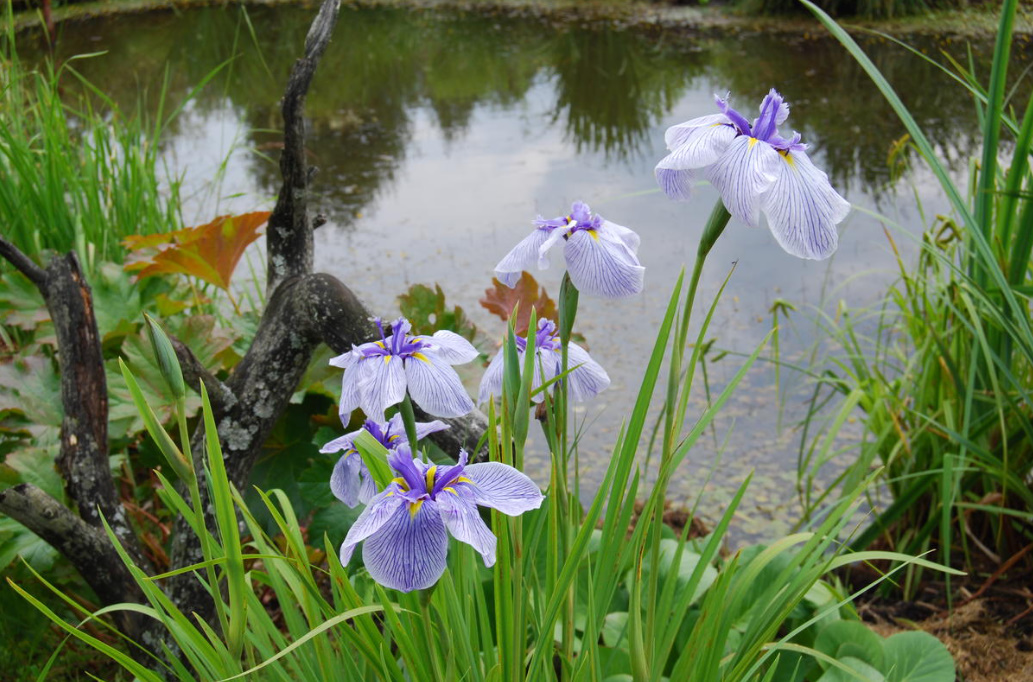
The soil on the site was initially acidic, and I only needed to adjust its composition according to the needs of the plants. When planting in each pit, I always added rotted compost. My hana-shobu are part of the compositions, so I don’t build dry shelters. In autumn, after pruning the leaves, I just cover them to keep the snow. For six years I have not lost a single iris in winter.
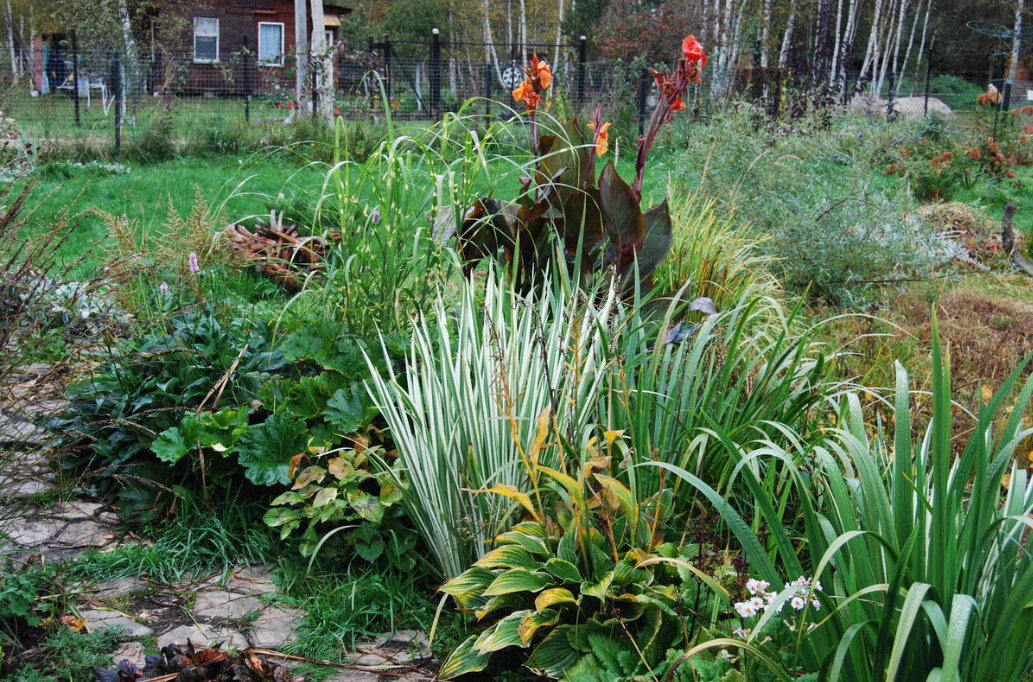
I feed it with a water-soluble complex fertilizer, at least twice a season I water it with a solution of mineral micro-fertilizer, and in summer I necessarily mulch it with mown grass. And the results please me.

My collection is still small, but it grows every year. Some varieties present pleasant surprises, others are puzzling. For example, ‘Light at Dawn’ in some foreign sources is characterized as very late, but in my garden it invariably blooms first.
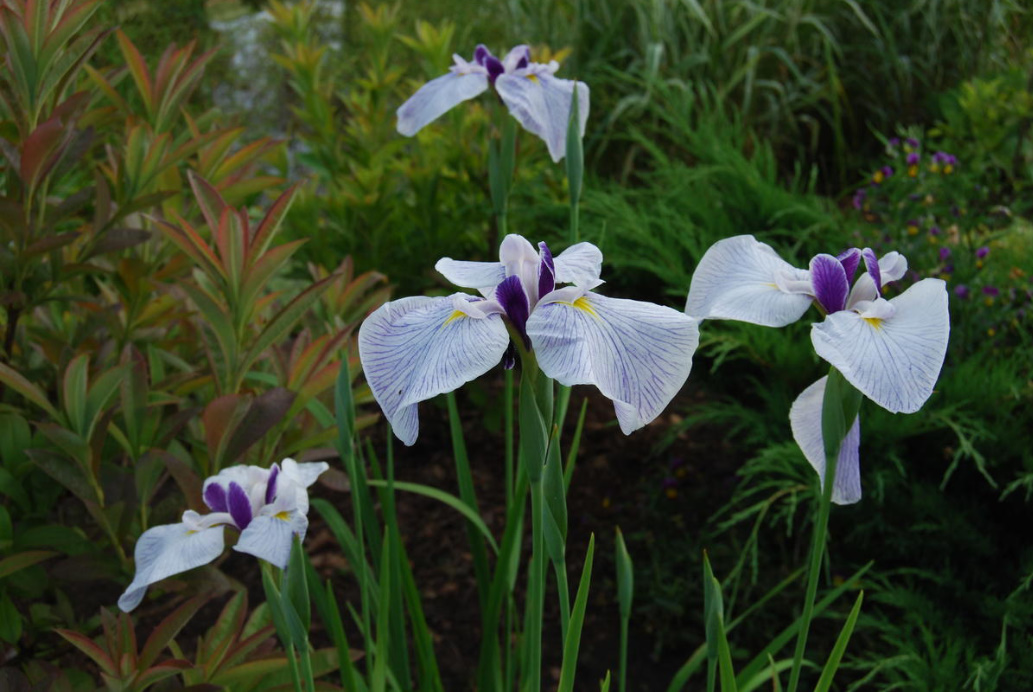
The size of the flower ‘Fortune’ should not, according to the data, exceed 14 cm, and my copy boasts 16-centimeter.

The elegant and delicate variety ‘Darling’, belonging to the Ise type, bloomed immediately in the year of planting, grows beautifully, and increases the number of peduncles with each season. But his brother ‘Royal Banner’, whose flowers delight with a rich purple color, gives out a single flower arrow from year to year.
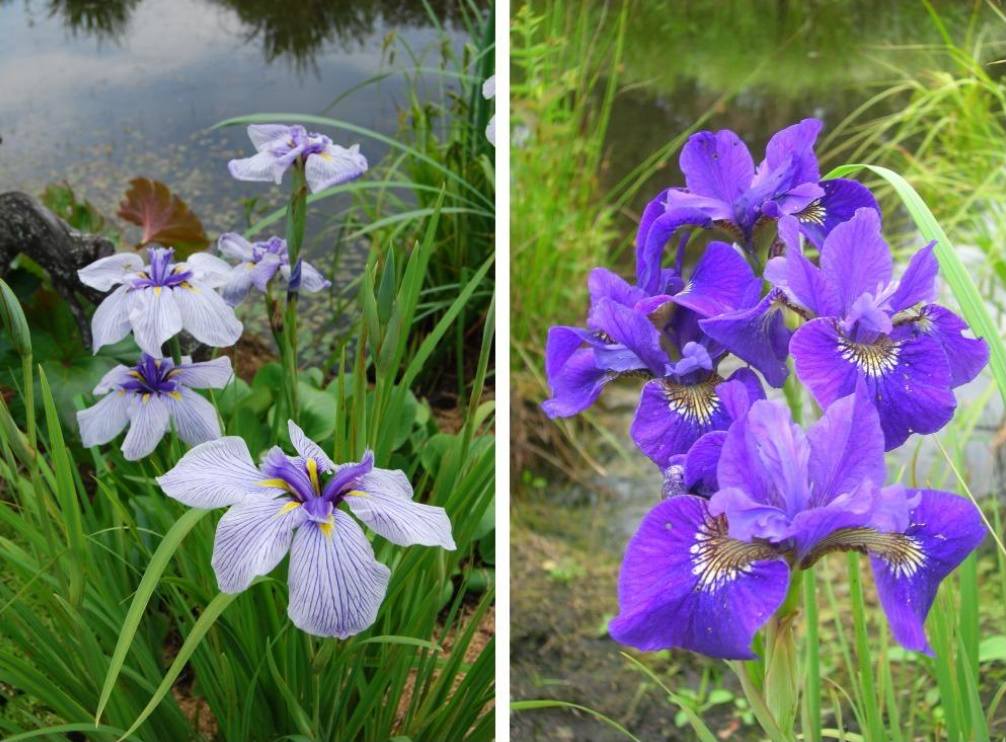
‘Pin Stripe’ consistently pleases with abundant flowering, and ‘Sylvia’s Masquerade’, on the contrary, has never yet allowed to admire the flowers.
Of course, my little experience does not allow me to draw serious and deep conclusions, but it still shows that hana-shobu is far from the most complex and capricious culture.
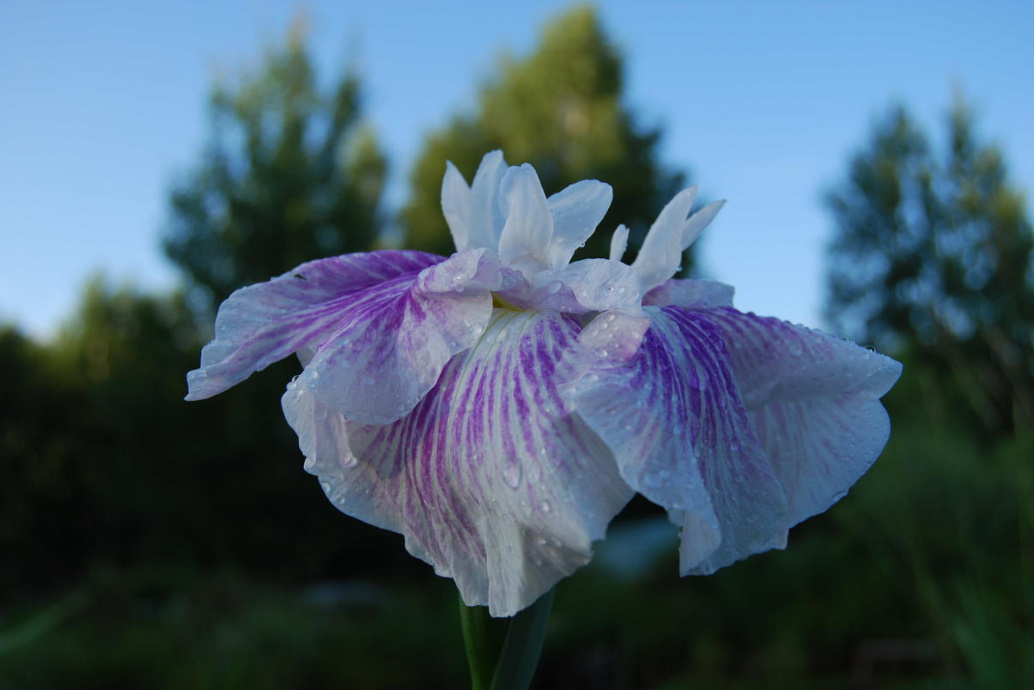
Do not be afraid of minor difficulties! Then at the end of June, when the nights are fleeting and full of magic, and the days seem endless, Japanese irises will also bloom in your garden.
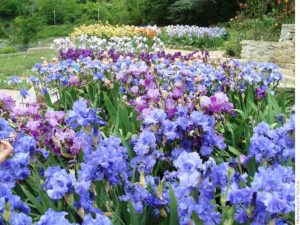


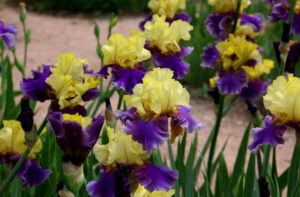
Leave a Reply